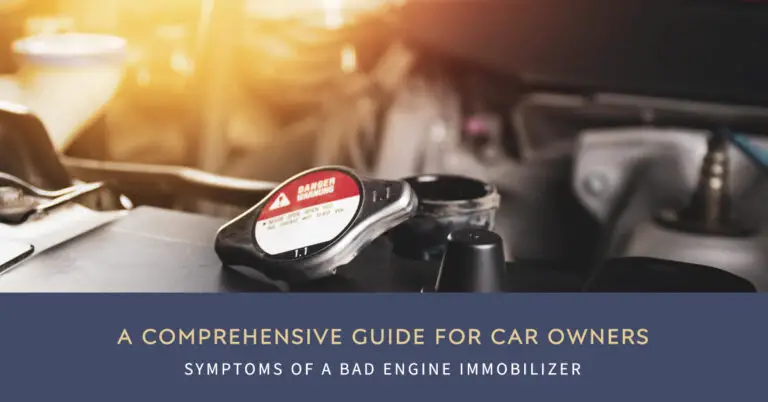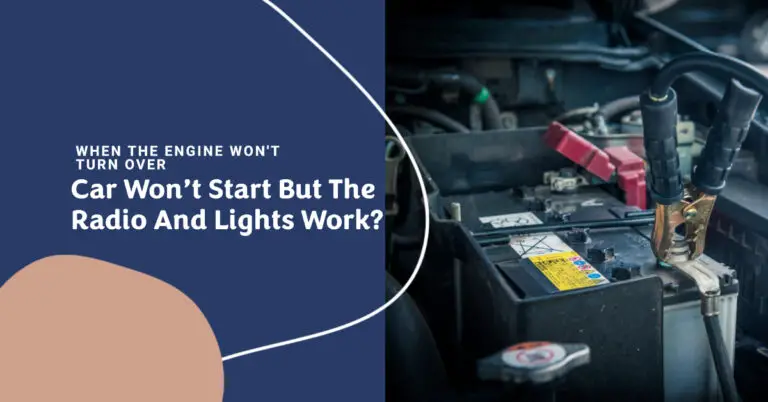Symptoms Of Loose Battery Cables: Troubleshooting Guide

Stuck in a parking lot with a car that won’t start, again? Hear an odd clicking when you turn the key? Dealing with a dead battery every few days? Annoying electrical issues can leave you stranded. But before calling a tow truck, check those battery cables! Loose connections cause plenty of problems.
Can loose battery cables really disable your vehicle? You bet. Let’s dive into why clamps loosen, how to spot symptoms, and tips to get your connections tightened up. Read on to stop loose cable gremlins in their tracks.
Table of Contents
What Happens When Battery Cable Connections Loosen?
First, how do perfectly tight cables get loose in the first place? Vibration, accidental impacts, and corrosion slowly degrade the terminal clamp bolts over time. This allows the cable ends to wiggle and lose contact intermittently. Some causes behind loosening battery clamps:
- Years of small vibrations during everyday driving. This can shake things loose.
- Banging the cables when doing engine maintenance or checks under the hood. It’s easy to accidentally bump stuff.
- Corrosion and gunk building up on the battery posts and cable ends. This material can separate the surfaces.
- Normal metal fatigue as clamps degrade after 5+ years of use. The spring tension weakens.
Once cable connections get compromised, all sorts of electrical issues pop up. Let’s explore why loose battery terminals spell trouble.
- Loose connections cause high resistance. Tight metal-to-metal contact is critical for proper current flow. But when clamps get loose, gaps form between the cable and terminal. The electrons must leap these tiny gaps, which requires extra voltage.
- This resistance causes a reduced flow of current. Less juice reaches vital components like the starter motor or alternator. Stuff starts malfunctioning!
- Intermittent contacts breed power drops. On rough roads, a loose clamp can separate entirely for a moment before reconnecting. This instantly drops system voltage, causing glitches like dimming lights.
- Sparks can occur. If a cable flops free, its exposed conductor may touch the car body. This shorts the circuit and can burn components. Not good!
Bottom line – don’t ignore loose battery cable signs. Addressing connectors early avoids headaches. Now let’s cover what issues to watch for.
Top 5 Symptoms of Loose Battery Cables
Loose connections manifest in all sorts of ways. Here are 5 common symptoms that point to battery cable problems:
1. Rapid Clicking Sound When Turning The Ignition
You insert the key and instead of the starter cranking, just a fast repetitive clicking noise comes from the engine bay. This happens when loose cables disrupt the high-current flow to the starter solenoid or motor. Tightening the clamps often solves it.
2. Headlights and Interior Lights Dimming Periodically
While driving, you notice the headlights and dash lights dipping brightness for a few seconds randomly. The loose connections cause voltage drops in the charging system that power the lights. Time to inspect those cables!
3. Electrical Components Malfunctioning Intermittently
From power windows sticking to AC blowing warm air, loose battery terminals can cause anything electrical to act up. The faulty power feed affects whatever system is drawing current when the voltage dips or shorts.
4. Difficulty Turning The Starter and Cranking The Engine
Turning the key results in slow, grindy starter operation rather than normal high-speed cranking. Or sometimes no cranking at all – just silence when you try starting up. Loose clamps reduce current to the starter, hampering its torque.
5. Frequent Dead Battery Issues
If your battery keeps going flat and needing a jump start every few days, loose cables could be the culprit. High resistance drains the battery faster by forcing it to work harder. The connections heat up and discharge more power.
Seeing any of those problems? It’s smart to inspect the battery terminals right away. Let’s cover how to check those connections for tightness.
How to Check Battery Cable Tightness?
Checking for loose battery clamps only takes a minute. Here is a simple 2-step process:
Step 1 – Visual Inspection
First, examine the cable connections for obvious signs of trouble:
- White or green corrosion around the terminals – This buildup can prevent tight clamping.
- Frayed or cracked cable insulation – Brittle and exposed wires require replacement.
- Clamp deformation or cracks – Damaged clamps reduce grip on the terminals.
Step 2 – Wiggle Test
Next, grab each cable by the plastic insulating sleeve near the clamp. Lightly shake up and down and side-to-side.
- Tight connections shouldn’t budge. Any looseness means it’s time to tighten.
- Perform this with the car switched off for safety. Loose connections may spark.
- Wear gloves and eye protection in case clamps do separate. Exposed conductors can be hazardous.
If you find a loose clamp, tighten it up. Here are some tips for restoring tightness.
How to Tighten Loose Battery Cable Connections?
It’s smart to address loose clamps right away. Here are tips for tightening up:
Clean Corrosion Off The Terminals
- Use a wire brush, sandpaper, or baking soda/water mix to remove white or green corrosion around the posts and cable ends. This gunk can prevent full metal-to-metal contact. Start with a clean surface.
Tighten The Cable Clamp Bolts
- Firmly tighten the terminal clamp bolts using the correct size wrench. Do not over-crank them. Snug is enough to sandwich the conductors.
Apply Protective Dielectric Grease
- Adding dielectric grease to the contact surfaces helps prevent future corrosion and also improves conductivity compared to air gaps.
Check For Damaged Cable Wires
- Examine the individual cable wires inside the insulation for fraying or exposed copper. If damage exists, the entire cable requires replacement for reliability.
Taking a few minutes to troubleshoot and tighten loose connections as needed avoids getting stranded down the road!
Conclusion
Loose battery cables cause all kinds of electrical woes from no-starts to wonky gauges and dead batteries. But armed with the right techniques for spotting symptoms and inspecting connections, you can dodge headaches. Reference this guide anytime your car starts acting up to rule out loose clamps. Catching them early and cleaning up the terminals gets you back on the road!
With vigilance and periodic maintenance, you can keep those battery cable connections ship-shape for years of reliable service. Use the tips here to detect and fix loose battery cables before they leave you stranded! Now go forth and wrench on those connections with confidence.







